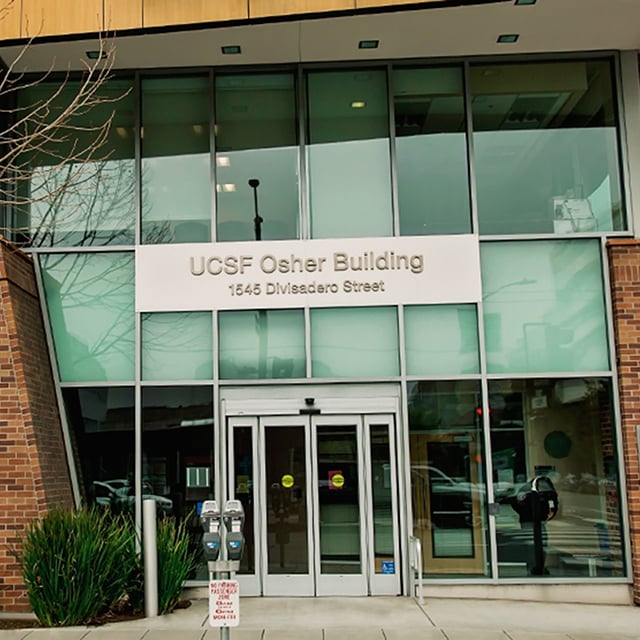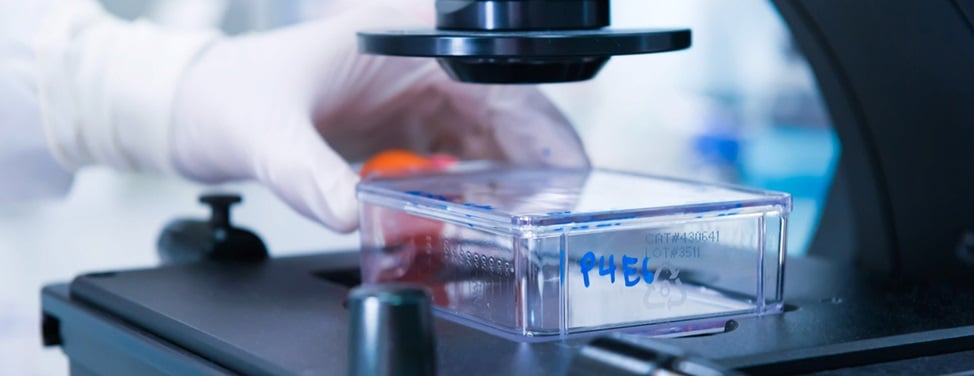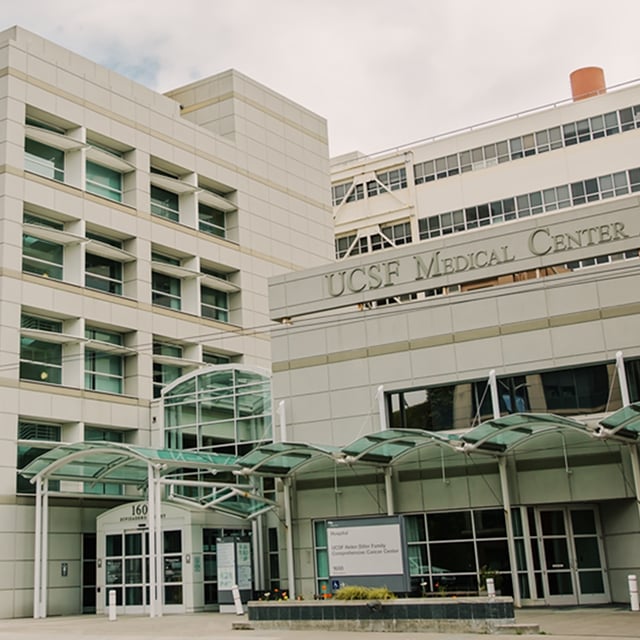Bladder Cancer

Overview
What is bladder cancer?
Your bladder is located in your lower abdomen and works with your kidneys to eliminate toxins from your body. The bladder has a muscular wall that expands and contracts, allowing it to store and release urine.
Bladder cancer develops when cells grow uncontrollably in the lining of the bladder. These cells can start to form tumors and spread to other areas of the body.
Fortunately, the majority of bladder cancers do not grow rapidly. Thus, most patients with bladder cancer are not at risk of developing a cancer that will spread and become life threatening. Early detection is vital, since prompt treatment gives patients the best chance for a favorable outlook.
Our approach to bladder cancer
At UCSF, our urologic oncologists are leaders in cancer risk assessment, genetic testing, and cancer prevention. They are also internationally recognized experts in the treatment of bladder cancer.
Our patients can benefit from our innovative diagnostic tools and treatments, including surgery, radiation, chemotherapy and immunotherapy. Patients may also benefit from promising new treatments, educational resources and support groups.
Awards & recognition
-

Among the top hospitals in the nation
-

Best in California and No. 7 in the nation for cancer care
-

Best in Northern California for urology
-

in NIH funding for urology research
Risks of bladder cancer
There are many factors that can contribute to the development of bladder cancer. Not all of these factors directly cause the cancer, but they may affect or damage the cells, increasing the risk of developing bladder cancer. These factors include:
- A family history of bladder cancer
- Changes in certain genes, including HRAS, RB1, PTEN/MMAC1, NAT2 and GSTM1
- Prolonged contact with certain paints, dyes, metals or petroleum products
- Past treatment with radiation to the pelvis or certain anticancer drugs.
- Consumption of water that has been treated with chlorine or contaminated with arsenic
- Prolonged use of a catheter
Types of bladder cancer
Bladder cancer can be categorized as superficial or invasive.
Superficial bladder cancer
Superficial bladder cancer is limited to the lining of the bladder. This type of cancer may start in the bladder's transitional cells or squamous cells. It often comes back after treatment, but it does not tend to progress. There are two subcategories of superficial bladder cancer:
- Transitional cell carcinoma. More than 90 percent of bladder cancers begin in the transitional cells.
- Squamous cell carcinoma. About 8 percent of bladder cancers begin in the squamous cells.
Invasive cancer
Cancer that grows through the lining and into the muscular wall of the bladder is known as invasive cancer. It may grow into a nearby organ such as the uterus or vagina in women or the prostate gland in men. It also may spread to other parts of the body.
Metastatic bladder cancer
When bladder cancer spreads outside the bladder, cancer cells are often found in nearby lymph nodes. If cancer cells have reached the surrounding lymph nodes, they may have also spread to other organs, such as the lungs, liver or bones.
When cancer spreads or metastasizes from its original place to another part of the body, the new tumor has the same kind of abnormal cells and the same name as the primary tumor.
For example, if bladder cancer spreads to the lungs, the cancer cells in the lungs are actually bladder cancer cells. The disease is metastatic bladder cancer, not lung cancer, and is treated as such.
Symptoms of bladder cancer
Common symptoms of bladder cancer include:
- Blood in the urine, making the urine slightly rusty to deep red
- Pain during urination
- Frequent urination, or feeling the need to urinate without results
These symptoms are not sure signs of bladder cancer. Infections, benign tumors, bladder stones or other problems also can cause these symptoms.
Diagnosis of bladder cancer
If you have symptoms that suggest bladder cancer, your doctor may check your overall health and order lab tests. Typical testing may include one or more of the following:
- Physical exam. The doctor feels your abdomen and pelvis for tumors. This may include a rectal or vaginal exam.
- Urine tests. The laboratory checks your urine for blood, cancer cells and other signs of disease.
- Intravenous pyelogram. During this test, dye is injected into a blood vessel. The dye collects in the urine, making the bladder show up on X-rays.
- Cystoscopy. A thin, lighted tube, called a cystoscope, is used to look directly into the bladder. The doctor inserts the cystoscope into the bladder through the urethra, which urine flows through to exit the body. The cystoscope is used to examine the lining of the bladder. The patient usually does not need anesthesia for this procedure.
Treatment of bladder cancer
People with bladder cancer have many treatment options, including surgery, radiation therapy, chemotherapy or biological therapy. Some patients receive a combination of these therapies.
Surgery
Surgery is a common treatment for bladder cancer. The type of surgery used typically depends on the stage and grade of the tumor. Your doctor can explain each procedure and discuss which is most suitable for you.
- Transurethral resection (TUR). TUR may be used to treat early or superficial bladder cancer. During this procedure, the doctor inserts a cystoscope into your bladder through your urethra. They then use a tool with a small wire loop on the end to remove the cancer and burn away any remaining cancer cells with an electric current.
- Segmental cystectomy. This procedure is used to treat low-grade cancers that have invaded the bladder wall in just one area. It involves removing only a part of the bladder.
- Radical cystectomy. This is the most common surgical treatment for invasive bladder cancer. It can also be used to treat superficial cancer that involves a large part of the bladder. Radical cystectomy includes the removal of the entire bladder, the nearby lymph nodes, part of the urethra and nearby organs that may contain cancer cells.
Radiation therapy for bladder cancer
Radiation therapy, also called radiotherapy, uses high-energy rays to kill cancer cells. Radiation therapy targets cancer cells in the treated area.
A small number of patients have radiation therapy before surgery to shrink the tumor. Others have it after surgery to kill cancer cells that may remain in the area. Sometimes, patients who can't have surgery receive radiation therapy instead.
Doctors use external radiation therapy to treat bladder cancer. A large machine outside the body aims radiation at the tumor area. Most people receiving external radiation are treated five days a week for five to seven weeks as an outpatient. This schedule helps to protect healthy cells and tissues by spreading out the total dose of radiation.
Chemotherapy for bladder cancer
Chemotherapy uses drugs to kill cancer cells. Your doctor may use one drug or a combination of drugs as part of your chemotherapy treatment.
- Intravesical chemotherapy. If you have superficial bladder cancer, your doctor may use intravesical chemotherapy after removing the cancer with transurethral resection (TUR). During treatment, the doctor injects liquid drugs into the bladder via a small tube (called a catheter) inserted through the urethra. The drugs remain in the bladder for several hours. They mainly affect cells in the bladder. Some patients go on to receive a series of these treatments over time.
- Intravenous chemotherapy. If the cancer has deeply invaded the bladder or spread to lymph nodes or other organs, your doctor may give you chemotherapy drugs through a vein. Intravenous chemotherapy is a systemic therapy, meaning that the drugs flow through the bloodstream to nearly every part of the body. The drugs are usually given in cycles so that a recovery period follows every treatment period.
Some patients have chemotherapy only. Others have chemotherapy combined with surgery, radiation therapy or both. Usually, chemotherapy doesn't require hospitalization although depending on which drugs are used and your general health, you may need a short hospital stay.
Immunotherapy for bladder cancer
Immunotherapy, also called biological therapy, uses medications designed to boost the body's own immune system to fight cancer. lmmunotherapy is most often used after transurethral resection (TUR) for superficial bladder cancer. Drugs are delivered directly into the bladder using a catheter. This helps prevent the cancer from coming back.
UCSF Health medical specialists have reviewed this information. It is for educational purposes only and is not intended to replace the advice of your doctor or other health care provider. We encourage you to discuss any questions or concerns you may have with your provider.
Where to get care (2)
Recommended reading
Related clinics (5)

Osher Center for Integrative Health
 2
2






























